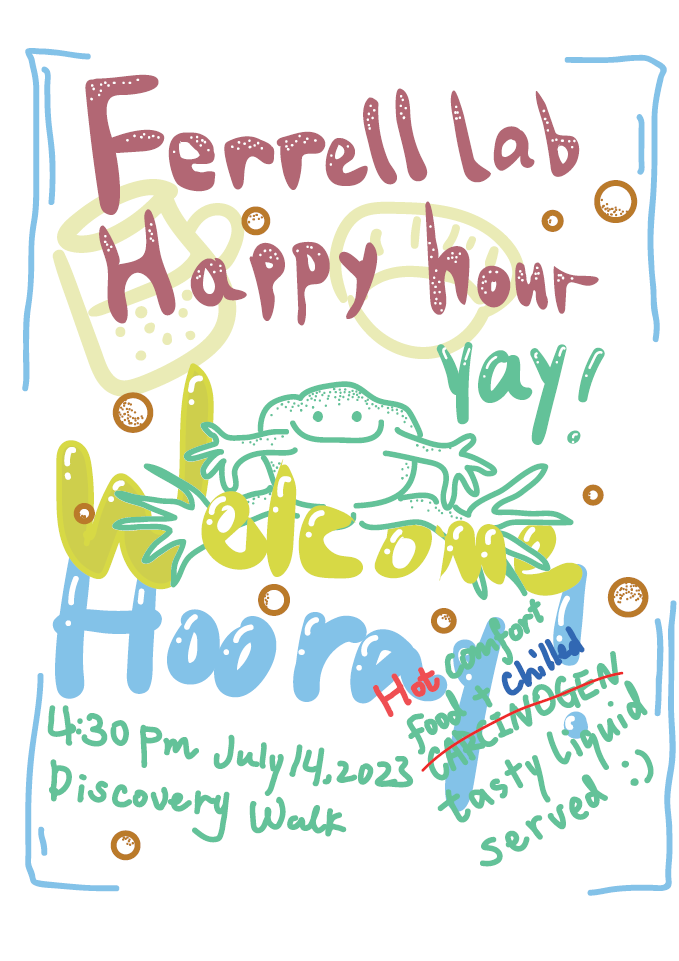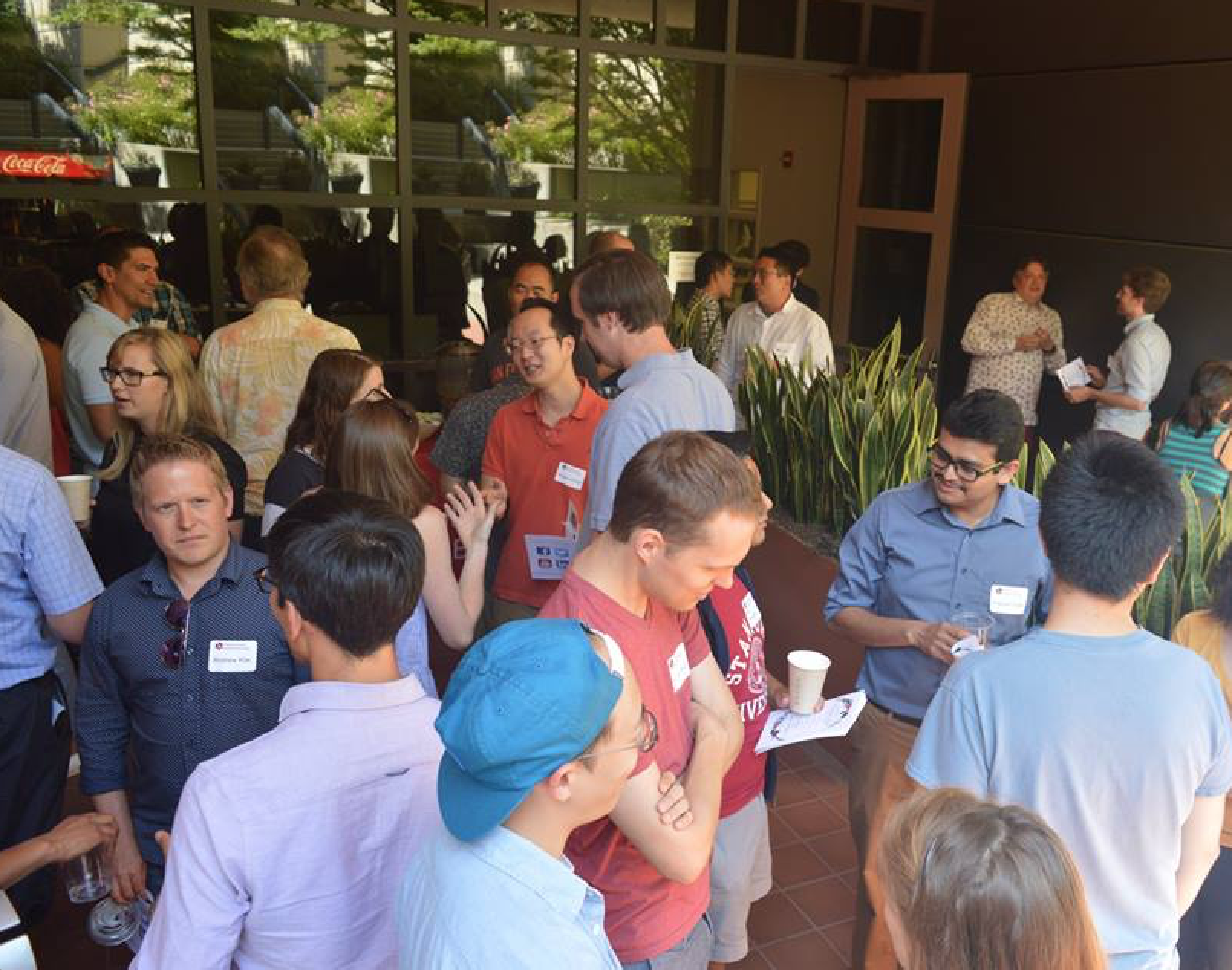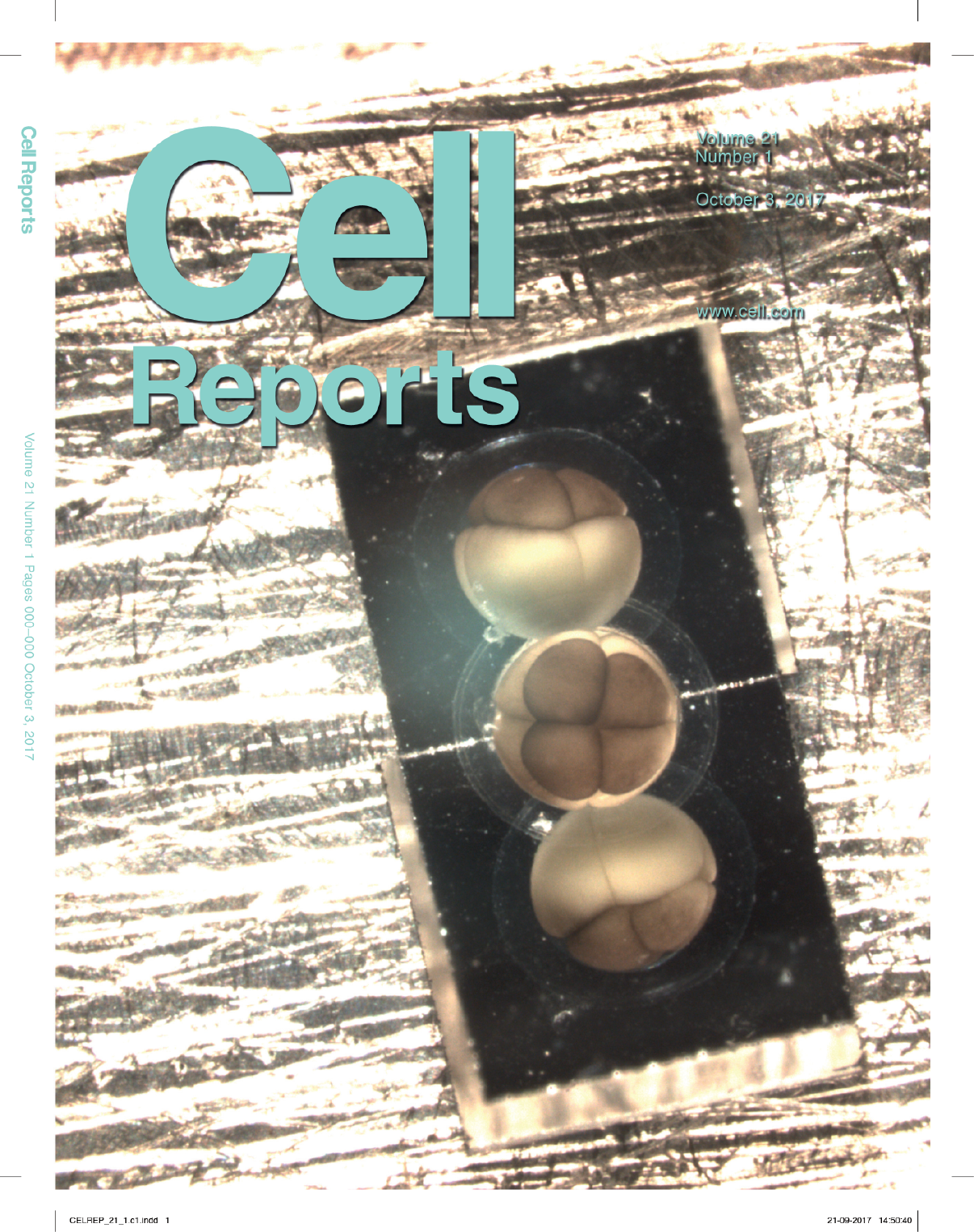
JOIN US! CSB Ferrell Lab Happy Hour! Friday, July 14, 4:30pm, Discovery Walk!
Read More »
Celebrating its Unique Program, Establishing a New Tradition with Alumni
Read More »“We have a deep understanding of biology at both the molecular level and the systems level. It’s like seeing two sides of the coin simultaneously. And we and our alumni can now tackle problems that were unsolvable ten years ago.” — James K. Chen, PhD, Chair, CSB Department
Connie Phong awarded a Dean’s Postdoctoral Fellowship
Connie Phone awarded a Dean’s Postdoctoral Fellowship
Read More »
Graham Anderson, Lendert Gelens, Julie Baker, and Jim Ferrell featured on the cover of Cell Reports
The cover image shows the early cell divisions of the Xenopus laevis embryo occur in spatial waves. To observe these cell division waves, Anderson et al. used mirrors and time-lapse microscopy to view embryos from multiple angles. The image shows a single eight-cell embryo resting on two opposing mirrors angled 45° from horizontal. The metal background is a machined aluminum temperature-control device that maintained the embryo at 18°C. Image by Graham Anderson and Lendert Gelens.
Read More »Commentary on Temporal Ordering of Cell Cycle Phosphorylation written by Julia Kamenz and Jim Ferrell will be published in Molecular Cell
Julia Kamenz and Jim Ferrell have written a commentary on “Temporal Ordering of Cell Cycle Phosphorylation” that will be published on February 3rd, 2017 in Molecular Cell. Julia Kamenz has also been selected to give a talk on her work on this topic at the Winter qBio Meeting in Kaui from February 24th through February 27th, 2017.
Read More »New Theory Suggests That Negative Cooperativity Can Make A Switch-Life Response In Signaling
The standard theory on negative cooperativity where the binding of one ligand makes it harder for a second ligand to bind to multi-subunit receptors says that the higher the negative cooperativity, the more graded the receptor’s response. It turns out that there is a little algebraic shortcut built into the standard theory, but in many situations, especially intracellular signaling, this assumption does not hold.
Read More »CSB Leads The New Center For Collective Cell Decisions At Stanford
Have you heard the news? Stanford has been awarded a $11.4 million, 5 year grant from the National Centers for Systems Biology to fund the launch of the new Center for Collective Cell Decisions, co-directed by our own Chemical & Systems Biology Professors James Ferrell and Tobias Meyer.
Read More »CSB Graduate Student Research Featured On Scope and ASBMB Today
CSB Graduate Students Jeremy Chang, Claudia Choi, and Josh Lichtman have had their recent publications show up on two major research blogs recently, Scope and ASBMB Today.
Read More »Spatial Feedback: The New Frontier Of Signaling Network Motifs
Mitosis is one of the most dramatic events in cell biology and the transition from interphase to mitosis is temporally abrupt, all-or-none in character, and irreversible. Mitosis is triggered by the activation of Cdk1-cyclin B1 and its abrupt translocation from the cytoplasm to the nucleus.
Read More »